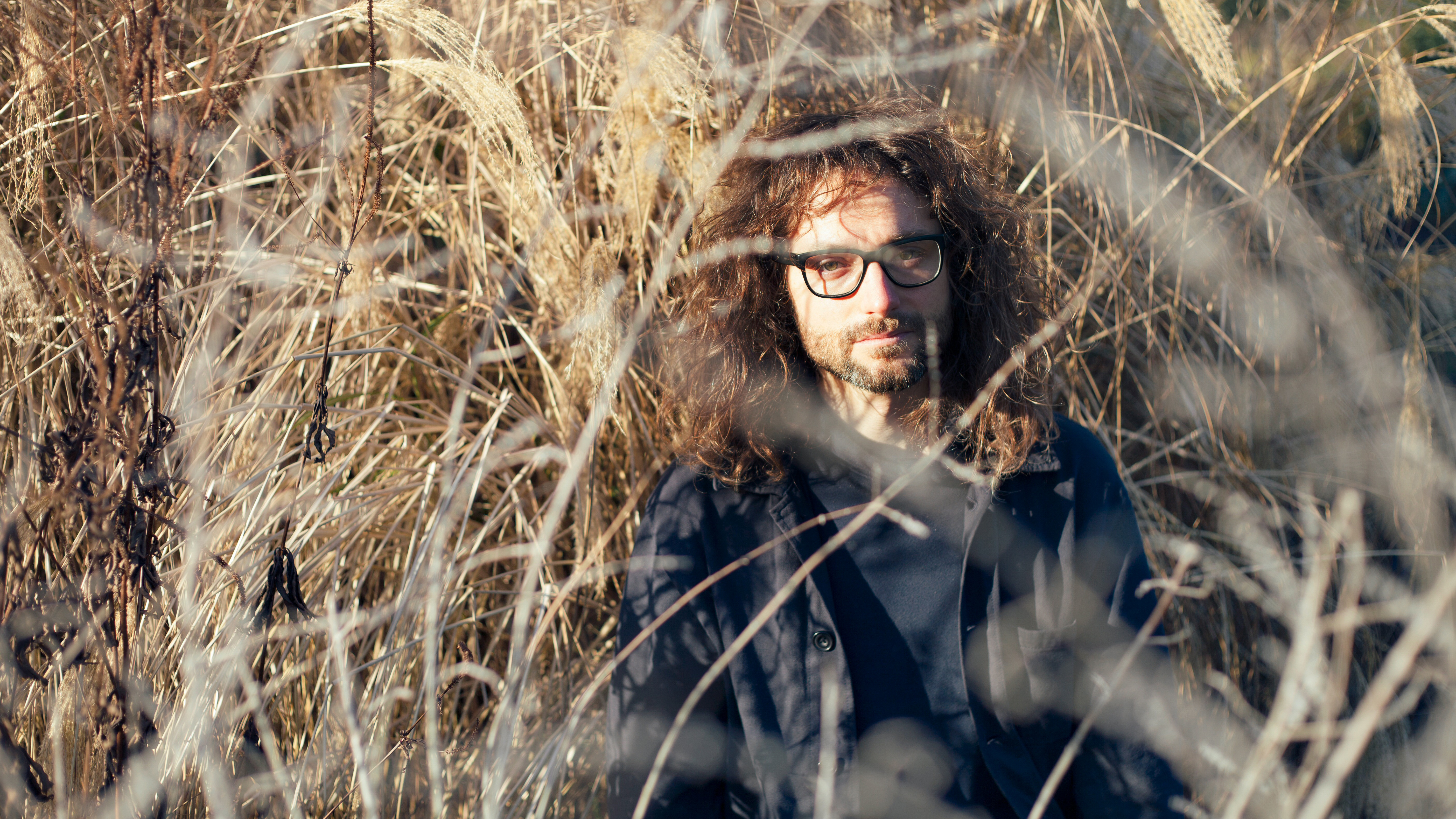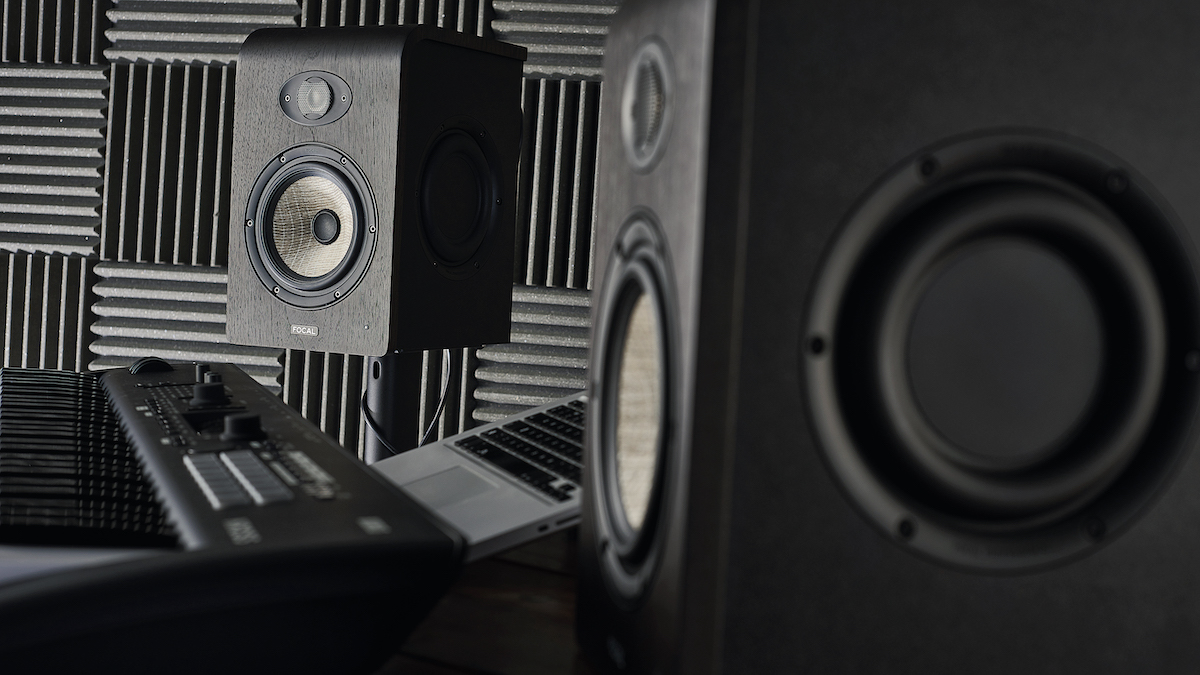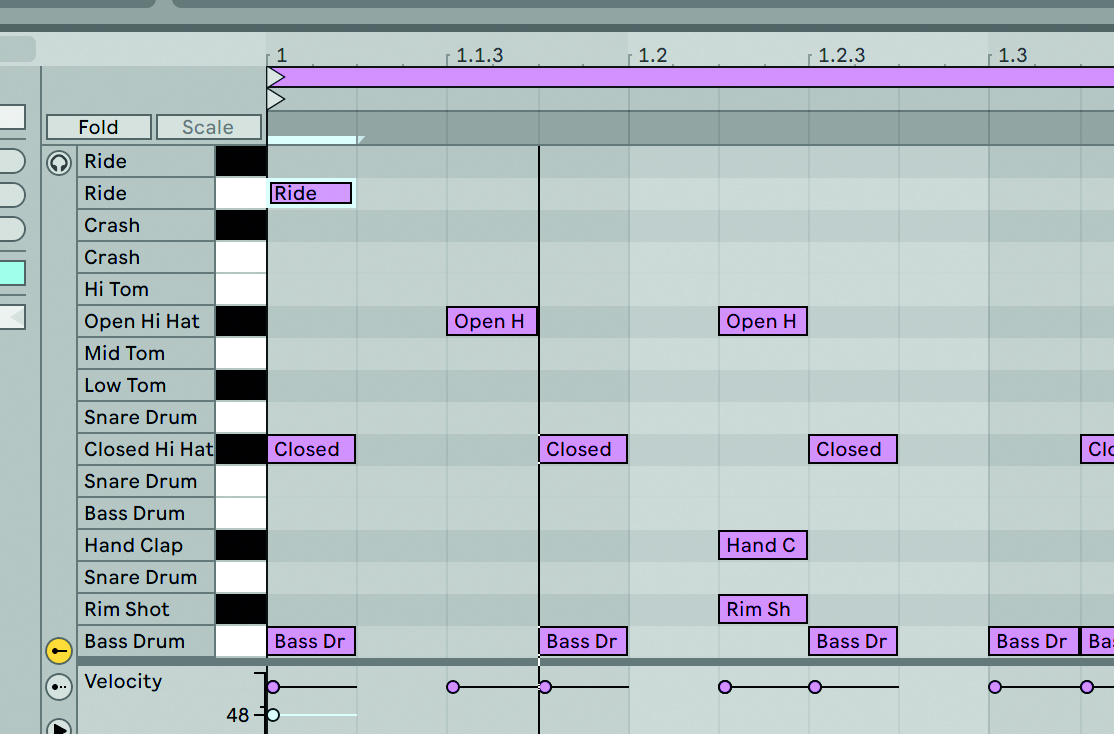Casually Here: “I don’t use VST synths any more. I experiment with hardware synths in ways I never did with plugins”
Nic Nell gives us a deeper insight into how he builds the sonic worlds found in his new album, Possible Worlds

The album art for Possible Worlds, the new record from London-based producer Nic Nell, depicts a utopian eco-futurist cityscape, dotted with pristine pastures and wind turbines that tower gracefully above the idyllic tableaux.
This fitting image neatly mirrors the music itself, which marries contemporary sound design with organic percussion, feather-light ambient textures and a touching sense of hopeful melancholy.
A producer, composer, sound designer and studio engineer, Nic records under the alias Casually Here and runs an independent label, Algebra Records. In producing his expansive, atmospheric opus Possible Worlds, he built new sonic worlds while questioning how we treat our own, exploring the existential risk that faces our environment through sweeping, transcendent electronica.
We spoke with Nic to find out more about the studio equipment and creative processes that lay behind the making of the new record, and he was kind enough to drop three essential tips for creative production.

When did you start making music, and how did you first get started?
“I was classically trained as a kid, singing in choirs, playing the clarinet and a bit of piano. As a teenager I learned to drum and started singing in a band. At university I picked up the guitar and started writing my own solo stuff, being really into artists like Regina Spektor, Joanna Newsom and Kaki King, which led to getting into live looping of voice and guitar, and my first synth - a Microkorg - and a copy of Ableton 5.
“I was progressively getting more into the production side of things and then when I heard Burial’s Untrue for the first time, it was a total game-changer for me, which led to me stepping away from being a singer-songwriter and focusing on making instrumental electronic music as Casually Here.”
Get the MusicRadar Newsletter
Want all the hottest music and gear news, reviews, deals, features and more, direct to your inbox? Sign up here.
Tell us about your studio/set-up.
“For the past 18 months my studio has been at home in the loft. It gets loads of light which is amazing after a few years of renting shared windowless studios. I built lots of acoustic panels during lockdown and have been working on the acoustics so it’s sounding pretty good.
When I heard Burial’s Untrue for the first time, it was a total game-changer for me
“I’ve got a good collection of hardware synths now so I don’t really use VST synths anymore - though I did in the past. The big difference I’ve found with hardware versus software is that I experiment in ways I never did when using plugins. For example you can find yourself really in the moment with a piece of music, almost zoning out playing with a knob or slider, feeling it and having fun with it rather than thinking too much about what it is you're doing.
“There’s something about the higher stakes of having to capture stuff in the moment that forces you to be present and to commit. I also love hardware effects - external delays and reverbs - as you end up playing with the time (de-pitching etc) and using them in creative ways you never would in plugin form.

Best studio monitors: 15 budget-spanning studio speakers for musicians and producers
“For example - I had never automated the time of a VST reverb before doing it with hardware, which I now do regularly. I love to have things in constant motion and development in time and that’s really natural to do when physically playing with hardware.
“I think the best monitors you can afford are a really worthwhile investment, and in my opinion musicians should prioritise them more when they're investing in equipment for their studios. They are what you’re using to make all your production decisions, at all stages of the process, so they're key to helping you make the best decisions for your music, to translate with the least amount of fixing issues required later in the process.
“I had a pair of monitors for years that I love as a HiFi but my mixes just didn’t translate, despite sounding great in the studio. I now have a pair of Neumann KH310As which were a complete game-changer.”
What DAW (or DAWs) do you use, and why did you choose it?
“I use Ableton. It was suggested to me years back, and on the first day of installing it I made two tracks from scratch which went on to be singles. I just found it really intuitive and really enjoy the flexibility in manipulating recordings and samples. It consistently got better and has become an increasingly powerful tool from an engineering point of view with the recent addition of takes and groups in groups.
What one piece of gear in your studio could you not do without, and why?
“My Roland Juno-6. It sounds amazing and I’ve got to know it well enough that it just feels like a second voice. I've used it on pretty much everything I've made since I got it. I really learned synthesis on it after years of using VSTs and other synths, as it’s all one knob one function.
“You can see what everything is doing just by looking at it and there are no sudden jumps when you change parameters - that happens on a lot of digitally controlled synths with presets, which can put you off trying things. Mine isn’t modded so it can’t take MIDI, which means you really have to play it. The arpeggiator is great on it and it can sound both massive and subtle, from basses to pads and is great fun for making things like hi-hats with the arp.”
What's the latest addition to your studio?
I couldn’t do without my Roland Juno-6. I’ve got to know it well enough that it feels like a second voice
“A couple bits of serious outboard gear for mastering - the Overstayer Modular Channel 8755 DM and Great River MAQ-2NV Mastering EQ. The Overstayer is a distortion, filter, EQ, and compressor which can all be blended at the end so you can use it for subtle or brutal applications.
“I've been using it to dial in a saturated, characterful signal when mastering and then blending a little of that in with the clean signal. A friend was selling the MAQ, which is a serious bit of mastering gear which I wouldn’t describe as fun but really does sound great.”
What dream bit of gear would you love to have in your studio?
“A big pair of ATC monitors and a large enough balanced studio to match. Maybe the SCM50s or SCM100s. I tried the SCM25s nearfields in the studio a few years back which are the best sounding nearfields I've ever heard with incredible resolution, stereo field and clarity in the mids in particular, but I couldn't quite justify the expense at the time.”
When approaching a new track or project, where do you start?
“I play around with lots of things to challenge myself to come up with new ways to generate jump off points. I often start tracks whilst working on other projects - or open a project with sounds and effects set up that I'm enjoying, and start playing in that palette. I make loops out of field recordings to see what emerges as a way of starting grooves. I enjoy playing around and generating a load of audio and then using the audio as samples.
I approach music production as the making of forms and worlds
“Recently I’ve been recording a load of arpeggiator takes from the Juno into a 4-track Tascam tape machine and then performing takes of that - playing with all the sliders/knobs etc into Ableton through the OTO Bam reverb - making a load of pretty wild, unpredictable sounds to then jump off from. I also have quite a lot of success writing just before bed when the stakes are very low and the brain is getting sleepy and starting to shut down some functions, so it’s less critical.”
If you had to pick one track that’s been most influential on your work, what would it be?
“Jon Hopkins’ Open Eye Signal was a game changer for me. It opened my eyes to the potential of dance music as an art form in ways that I hadn’t experienced before, with a combination of visceral physicality and attention to detail, and continues to be up there as one of my big ones.”
What do you think makes you unique as a producer and musician?
“I approach sound production as the making of forms and worlds and I try to make my music as entertaining to listen to as watching a movie, with things constantly moving and evolving. I try to push my music past the point where I'm seeing the edges of it, to where it has a bit of the feelings of magic I get from music that I love, which hopefully translates for others too.”
What are you currently working on?
“My most ambitious record to date, Possible Worlds, is out April 1st and I'm working on my live show for it. I'm finishing up the follow up as well as a more ambient album and just remixed Art School Girlfriend. I'm working on an experimental collaborative album with composer Sami El-Enany as well as lots of mixing, mastering and releases on my label Algebra Records.”
Casually Here's three tips for creative production
1. Don’t judge in the moment of making
“This might sound counterintuitive but it’s really important. Not all ideas will develop into finished pieces of music and if they do, into records that you’ll release. But sometimes things that don't feel particularly special in the moment can turn out to be really special ones on later reflection, or they can do something that you didn't really recognise at the time.
Getting as much down as you can in those first moments of inspiration is really valuable
“I find that following the feeling of emotional or energetic resonance when an idea is emerging like a divining rod, and getting as much down as you can in those first moments of inspiration is really valuable. There’s a reason that that idea is speaking, so capturing as much of that energy as possible is key. Don't judge too harshly in the moment, as you can gazzump the idea even existing.”
2. Once you start an idea, follow through

“It’s amazing how much you can get done in those first few moments of play and how many decisions you can make whilst the stakes are low. It can take quite a lot of energy to do this, but I've found it to be a complete game changer for me in regards to finishing pieces of music, rather than having hard drives full of the beginnings of ideas.
“So if you have a nice idea for a chord progression, maybe see if there's a B section that works, and then see if you can construct an intro to the track. The transitions may be rough and you may want to switch things up later, but listening out of the house on headphones or in the kitchen whilst cooking, away from your computer makes it a piece of music you’re reacting to rather than an idea you’re working on.”
3. Name each track before hitting record
“I name each track I’m recording into with some information before I hit record, so the recording is automatically named - eg. “Juno OTO BAM Nic” - so I can then search samples within Ableton for say 'Juno' and it will come up with thousands of takes from hundreds of projects that I can then sample without issue. This is really helpful for resampled drums, delays and reverbs, for quickly building up grooves and the chance of interesting coincidences.
“You can make use of nicely recorded stuff through interesting chains, for example, drum recordings you've made, and it can also help with keeping some sonic consistency throughout your tracks as you build your sound palette over a period of time. It can also help you to move quickly in the moment rather than getting stuck demoing loads of sample packs which can be a total buzz kill.”
Casually Here’s Possible Worlds is out April 1 on Algebra Records.



I'm MusicRadar's Tech Editor, working across everything from product news and gear-focused features to artist interviews and tech tutorials. I love electronic music and I'm perpetually fascinated by the tools we use to make it. When I'm not behind my laptop keyboard, you'll probably find me behind a MIDI keyboard, carefully crafting the beginnings of another project that I'll ultimately abandon to the creative graveyard that is my overstuffed hard drive.



![PRS Archon Classic and Mark Tremonti MT 15 v2: the newly redesigned tube amps offer a host of new features and tones, with the Alter Bridge guitarist's new lunchbox head [right] featuring the Overdrive channel from his MT 100 head, and there's a half-power switch, too.](https://cdn.mos.cms.futurecdn.net/FD37q5pRLCQDhCpT8y94Zi.jpg)





